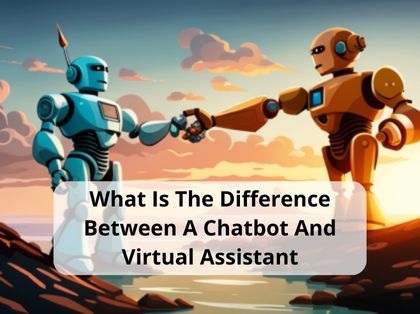
With the terms chatbots and virtual assistants being bandied around frequently, there has been a lot of ambiguity associated with the two technologies — chatbots and virtual assistants. With a slew of easy to build chatbot tools inundating the market, one should remember that the scope or role of both these technologies is different. For example, one user pointed out that the key difference is that a chatbot is largely server or company oriented while virtual assistants like Cortana or the more popular one Siri are user-oriented.
Bots are programmed specifically for some selective purposes and they generally perform repetitive tasks. They cannot modulate replies and are never unpredictable in their work. Both, virtual assistants and chatbots feature a human interface system, but in ways that are different from each other. They can understand what the user is saying and have in-built replies to give to the user.
Here’s how the interface of virtual assistant and chatbots differs in many aspects:
Chatbots: Chatbots are typically text-based and are programmed to reply to only a certain set of questions or statements. If the question asked is other than the learned set of responses by the customer, they will fail. Chatbots cannot hold long, continuing human interaction. Traditionally they are text-based but audio and pictures can also be used for interaction. They provide more like an FAQ type of an interaction. They cannot process languages particularly.
Virtual Assistants: On the other hand, Virtual Assistants have a much sophisticated interactive platform. They understand not just the language but also the meaning of what the user is saying. They can learn from instances and provide an unpredictability to their behaviour. That way they can have a long human interaction. They can be set to perform slightly complicated tasks as well.
Chatbots: Chatbots are not programmed to respond to a change in use of language. It does not have high language processing skills. It only picks certain words from the user and answers it with a response programmed into it.Meanwhile, chatbots have a structured dialogue, and is specifically programmed to answer specific replies to specific questions and it cannot reply to complex questions that are not programmed in it. In such a situation, it cannot understand the customer and fails to reply appropriately.
Virtual Assistants: Virtual Assistants mainly concentrate on natural language processing (NLP) and Natural Language Understanding (NLU). There has been a substantial amount of research in NLP to build advanced capabilities in virtual assistants; case in point Virtual Assistants can now understand slangs used in everyday natural conversations and analyse the sentiments by the use of languages, to enhance an even better set of communication skills. The NLP makes virtual assistants more conversational than chatbots.
Virtual assistants can handle conversations, have robust NLP capacities and carry out a limited number of conversations via hard-coding, wildcard matching of words and time-consuming keyword training.
Chatbots: Chatbot has a limited use and does not have sophisticated algorithms in areas customer support and automated purchases baked in. It follows tasks based on simple rules and cannot perform complex tasks. Today, most customer service requests or interactions are automated.
Virtual Assistants: Virtual Assistants have a wider scope and can perform a range of tasks, for example comparing products or finding the best product based on the given features. It is also deployed to tasks like decision making and e-commerce. It can perform activities like sharing jokes, playing music, stock market updates and even controlling the electronic gadgets in the room. Unlike chatbots, virtual assistants mature gradually with use.
Chatbots: Two chatbot models predominantly used are generative model and the selective model. The generator ranking model has a lot of layers of information and the what is asked by the user goes through each layer to finally come up with the best response. The selective model, also called as ranking model, ranks the information by the user with its current memory information and goes into a sequence to come up with the best response. Bots are trained with structured data. Chatbots can easily be made with languages node.js, javascript and python. Although java and C# can also be used, but they don’t provide an interface as better as the other three. Some hosting servers popular with building them are AWS, Heroku and Azure.
Virtual Assistants: Virtual assistants use artificial neural networks to learn from situations. ANNs are used to recognize, classify and predict, based on analysis. With the help of several APIs, the virtual assistant can’t be made to learn. Some popular APIs available are api.ai, Wit.ai, Melissa, Clarifai, Tensorflow, Amazon AI, IBM Watson. Some slightly less popular ones are Cogito, DataSift, iSpeech, Microsoft Project Oxford, Mozscape and OpenCalais.
